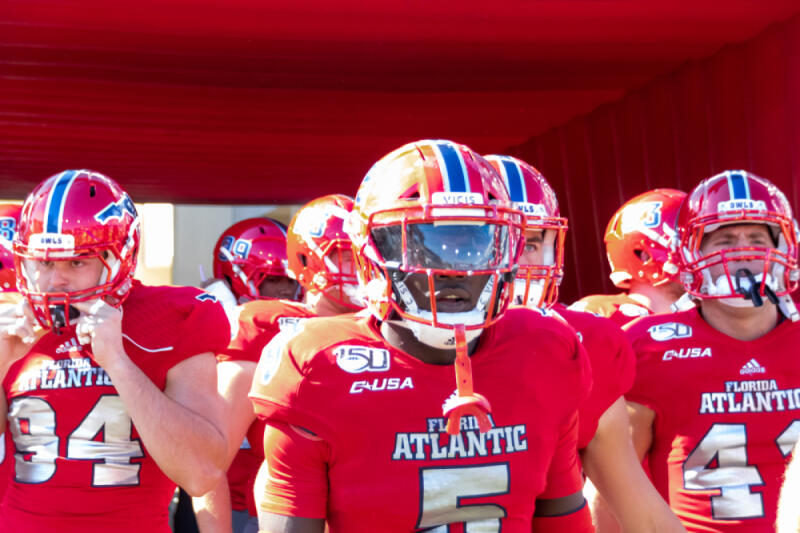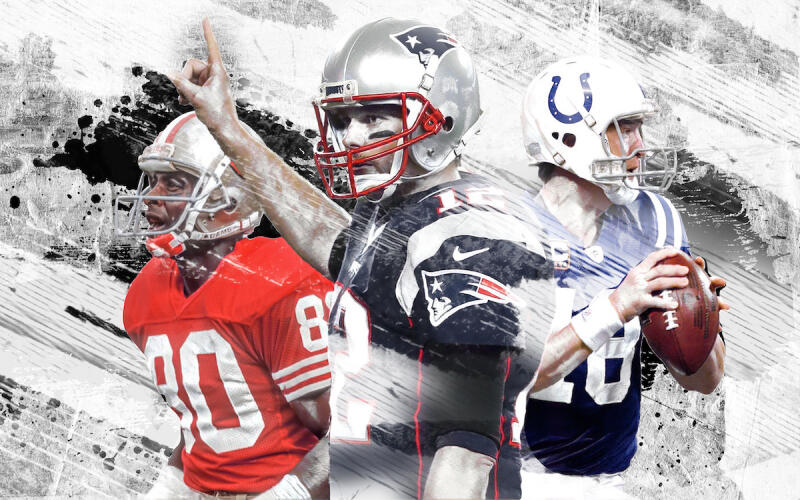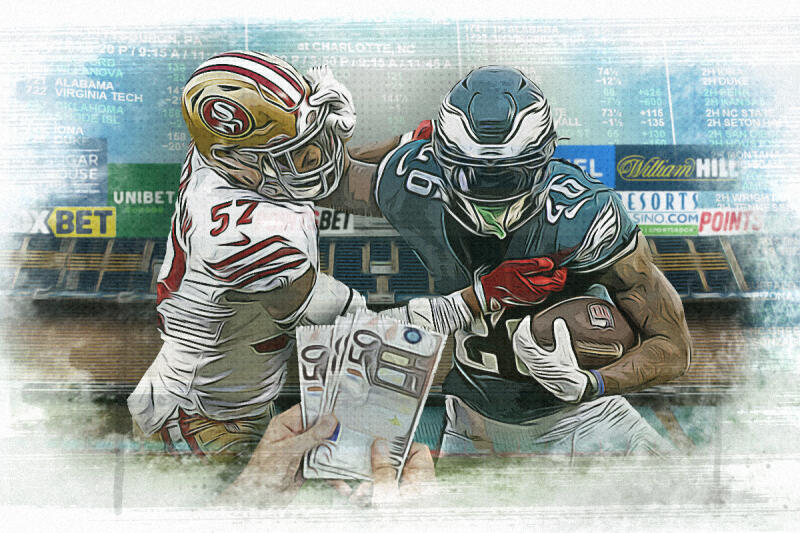How To Play Fantasy Football
Are all your friends constantly blabbering about fantasy football, bragging about how their teams did last weekend, and making you eager to join the action? Do you believe you have what it takes to run your own football team? Or that you can do a better job than your favorite team’s current managers?
If your answer to any of the previous questions is yes, then fantasy football is for you.
We understand that, if you are starting out, fantasy football can seem overwhelming, which is why, here at Lines.com, we have created this comprehensive guide to get you started and help you run your fantasy football team.
What is fantasy football?
Basics
In a nutshell, fantasy football is a game in which you create your own “dream team”, choosing the players that you believe will perform best in each of the positions available, those that you would like to have in your squad.
Every week, your statistics will be based on what happens in the real-life matchups, and how the players you chose performed. Then, your stats compete against other people’s fantasy football teams.
Related: Get the lowdown on this week's matchups with our NFL AI Predictions.
For example, if you chose Tom Brady as your starting quarterback, and Tom Brady threw 5 touchdown passes, and one of your colleagues chose Jalen Hurts, and he only threw 3 touchdown passes that weekend, then, you will have more points than your colleague in the quarterback category. The process then repeats itself with the rest of your chosen players.
We’ll explain more details about the scoring further below, but this gives you an idea of how it works.
Fantasy Football History
According to Britannica Encyclopedia, the first concept of fantasy football originated in 1962, with the creation of the GOPPL (Greater Oakland Professional Pigskin Prognosticators League), co-led by Bill Winkenbach, who was then a part owner of the Oakland Raiders (now Las Vegas Raiders) football team.
The idea conceived by Winkenbach and his peers consisted of a fantasy league, in which each of them would draft their own “fantasy” teams, and compete against one another, accumulating points based on the real-life performance of their chosen players.
Following this, fantasy football variations flourished over the years, until in 1998, Yahoo! became the first mainstream platform to host leagues through its Yahoo! Fantasy section, bolstering the popularity of fantasy sports.
It is estimated that now, over 40 million people play fantasy football in the United States. ESPN’s Fantasy Football alone recorded 11 million people playing its game, and Fox Sports reported that Fantasy NFL is an industry that is worth roughly $70 billion, providing a solid foundation for the league to keep its acceptance surging nationwide.
How To Play Fantasy Football: Rules and Formats
Depending on the fantasy league host, there are different league formats that fantasy football follows.
Traditional Format
The traditional fantasy football league consists of an initial draft, which happens once a year, and runs for the entire season. After the season is over, the top teams qualify for the playoffs, and just like it happens in the NFL, one team ends up becoming the champion.
In this format, participants keep the same team throughout the season. Therefore, it is expected that players do their research before the competition starts to maximize their chances of making the right choices.
A reason why many players incline toward the traditional format is that it gives the competition the flavor of a real NFL season, as team owners need to deal with injuries, suspensions, and the normal ebb-and-flow of some players’ performances.
Dynasty/Keeper Format
One way in which the traditional format has been adjusted to enhance the experience of being an NFL team owner is through the dynasty and keeper formats.
While in a traditional fantasy football league players draft an entirely new team every season, in a keeper format, they are allowed to keep a particular number of players on their roster.
The dynasty league goes a step further, as it allows fantasy team owners to maintain all of their players, except for those who have retired. In a dynasty format, the drafts resemble the real NFL drafts, in which teams can only select players who are new to the league.
As a result, the dynasty league format is often favored by those managers who have a long-term approach to the game.
Daily/Weekly Format
On the other end of the spectrum, some leagues have a short-term format, which is designed to give players a chance to adapt to the changing circumstances of the league.
In the daily and weekly league formats, fantasy team managers draft new players every week. Proponents of this format argue that it helps fantasy football team owners to circumvent setbacks like injuries and suspensions.
This format has quickly become popular, increasing weekly engagement as managers need to be following players’ statistics and making choices based on their current state of form. Also, many companies that host daily fantasy football leagues offer cash prizes to the week’s top teams, making it more appealing for competitors.
Playing Fantasy Football on Chalkboard
If you are looking for a fantasy football platform that has ongoing bonuses, Chalkboard is a great option. A fully-functional hub that offers features like live-stat tracking, Chalkboard provides you with the chance to both join one of the existing communities and create your own group with friends and family.
The app has been highly regarded for its ease of use and intuitive design, and it is now home to several groups nationwide. In addition to its pick tracker and game hubs, there is also Chalkboard Streaks, where you can play fantasy football with real money. Through Streaks, you can win up to 50x your stake, depending on the statistical prediction you make. Chalkboard is also offering, for a limited time, a welcome deposit match bonus.
For more information, download Chalkboard here and enjoy all the benefits that it has to offer!
Join a League
Public Leagues
Across different platforms, like Yahoo!, ESPN, DraftKings, and FanDuel, there are several public leagues that you can join to compete in fantasy football.
While some public leagues are free, other public leagues will charge an entry fee.
As a beginner, it is recommended that you start “testing the waters” in the free league, which will strengthen your fantasy football foundations and give you the necessary experience to compete in the for-money leagues.
Private Leagues
Opposite to public leagues, private leagues are accessed by invitation only. Also, they generally accept a limited number of players.
The person that initiates the private league becomes the league’s commissioner, determining who can play in the league and who cannot. Private leagues are more common among groups of peers who already know each other and want to compete exclusively against one another.
Because of this, private leagues can sometimes have alternative scoring rules, all of which are agreed upon by the league members. The league’s commissioner has the authority to set and alter the rules of their league.
Create Your Own
If you and your peers want to compete and create your fantasy football league, there are platforms like ESPN and Yahoo! that offer the option of doing so.
By creating your league, you become the league’s commissioner, and therefore, responsible for establishing the following:
- The rules and format that the league will adopt
- The number of players accepted in the league
- Whether there will be any fee for joining the league
- The prizes for the winners
- Who is eligible for an invitation to join the league
Especially if you and your friends follow football closely, creating your league is an easy way for you to become acquainted with the world of fantasy football.
Fantasy Football Rules
The Draft
One of the pillars of fantasy football is the draft. As leagues have evolved, there are different draft types, and each league is responsible for setting its own.
Related: Fantasy Football Draft Strategy
Here are some of the draft types you are likely to find:
- Snake drafts: In a snake draft, players are assigned their draft picks on an alternate basis, in an attempt to make the draft fair to everyone. This means that the player that has the first pick in the first round will have the last pick in the second round, and so on. Vice versa, the player who had the last pick in the first round will have the first pick in the second round.
- Auction draft: The auction draft emerged as a response to the perceived lack of fairness of the snake draft. In the auction draft, fantasy football team owners are assigned a salary cap, which means, an amount of money they can spend to draft the players of their preference. The roster is then constructed through a bidding process, in which the player will go to the team which offers him the highest salary. For example, if you are drafting Patrick Mahomes and are offering $100 as your salary, and another owner offers $120, and the offer is unmatched, that owner will get Mahomes, and you will have the option to choose another QB.
- Linear drafts: In a linear draft, team owners keep their picking position throughout the draft. This means that the team that got the first pick in the first round will keep choosing first. While some private leagues might opt for this structure, linear drafts are the least popular because they provide certain players with the first-pick advantage.
Players
A key point in fantasy football is the number of players that can be a part of your team.
In most leagues, a fantasy football team is made of 16 players. Of those 16 players, 9 will be starters, while the other seven players will be on the bench.
In this regard, the starting players include:
- 1 quarterback (QB)
- 2 running backs (RB)
- 2 wide receivers (WR)
- 1 kicker (K)
- 1 defense (D/ST)
- 1 tight end (TE)
- 1 flex player (positions allowed will vary depending on the league)
Who you start is important, because, in fantasy football, you will only earn points for those players that you start on your team. Your bench players do not earn you points towards your weekly total.
Trades
If you wish to switch the players who are a part of your team, there are two ways to make trades.
One of them is the waiver wire, and we explained it more in detail earlier. Basically, a waiver wire consists of a process in which you are able to potentially recruit a free agent, meaning, a player who has not been drafted by anybody else in your fantasy football league.
In addition to the waiver wire, some leagues also allow you to trade players with another team owner in your league. It is important to remark that those trades do not necessarily need to be one player for another. Often, as it happens in real life, you might choose to acquire a top performer in exchange for two or three players that you are willing to let go of.
Bye Weeks
For teams to be able to rest and recover, and to diminish the physical strain on the players, every NFL team is granted a “bye week” every season.
In fantasy football, it is important that you consider this week and know when the players you chose have a bye week.
When one of your starting players has a bye, you can promptly substitute them for a player you might have on the bench before the week play starts, or, if you feel the need to, consider one of the trading mechanisms explained above to acquire a different player.
Scoring Formats
You’ve joined a league, chosen your players and gotten your team ready to get up and running.
Now what?
Understanding how scoring works is the next essential step for you to fully comprehend fantasy football, and the following tables explain it in detail.
Offensive
| Offensive Plays | Points Granted |
| Passing Touchdowns | 4 points |
| Passing Yards | 1 point per 25 yards |
| Passing Interceptions | -2 points |
| Rushing Touchdowns | 6 points |
| Rushing Yards | 1 point per 10 yards |
| Receiving Yards | 1 point per 10 yards |
| Receiving Touchdowns | 6 points |
| Receptions | 1 point (only in Point per Reception system) |
| Fumbles | -2 points |
| 2-point Conversions | 2 points |
Defensive
| Defensive Plays | Points Granted |
| 0 points allowed | 10 points |
| 1-6 points allowed | 7 points |
| 7-13 points allowed | 4 points |
| 14-20 points allowed | 1 point |
| 21-27 points allowed | 0 point |
| 28-34 points allowed | -1 point |
| 35 or more points allowed | -4 points |
| Sack | 1 point |
| Extra Point Recovery | 2 points |
| Blocked Kick Attempt | 2 points |
| Safety | 2 points |
| Interception | 2 points |
| Fumble (Ball Recovery) | 2 points |
| Defensive Touchdown | 6 points |
Kicking
| Kicking Plays | Points Granted |
| Missing Field Goal | -1 point |
| Field Goal Scored (0-39 yards) | 3 points |
| Field Goal Scored (40-49 yards) | 4 points |
| Field Goal Scored (+50 yards) | 5 points |
| Extra Point Scored | 1 point |
Also, keep in mind that there might be slight adjustments to the way you accumulate points depending on the system that your league is using.
For example, the point that is granted per reception is only given in those leagues that use the PPR (Point Per Reception) system.
Along the same line, some leagues have implemented the IDP (Individual Defensive Player) scoring system, which bolsters the points awarded to defensive plays. Here is an example of IDP, from the Dynasty Pros Fantasy Football League:
| Defensive Play | Points Awarded through IDP |
| Tackle | 1 |
| Assisted Tackle | 0.5 |
| Sack | 4 |
| Tackle for Loss | 3 |
| Interception | 5 |
| Pass Defended | 1 |
| Forced Fumble | 2 |
| Fumble Recovery | 3 |
| Defensive Touchdown | 6 |
| Blocked FG/Extra Point | 2 |
| Blocked Punt | 2 |
| Safety | 4 |
Because of the aforementioned variations, you must consult the scoring system of your league and make sure you understand it in detail, as this will help you optimize your team selection process.
What is Waiver in Fantasy Football?
As described before, a waiver is a way in which a fantasy football team owner can make a claim for an undrafted player, with the intention of adding the player to their roster.
A waiver is only applicable to free agents, meaning those players that have not been drafted by any other team that is participating in the league.
If several teams put a claim on the same player, then the league’s system will allocate the player to the winning waiver, based on the league’s priority system.
Most commonly, the team that will receive priority when claiming waivers will be the one that has the poorest performance in the season, similar to the way the NFL Draft gives the #1 pick to the worst team of the previous season.
This serves to increase competition and give low-performing teams a chance to level up.
Managing the waiver wire
To make good use of the waiver wire, it is important that you identify those areas in which you might need an additional player to boost your scoring.
Also, look at the current status of your roster. Did one of your team’s players suffer an injury? Is someone suspended? Are there external factors affecting their performance?
Answering these questions can help you determine when you need to use a waiver. In most leagues, waiver requests are submitted on Tuesdays, and if the waiver is successful, the player will join your team on Wednesday. If there is breaking news that affects a player’s participation, a special waiver will open up.
Where To Play Fantasy Football
With fantasy football soaring in popularity, several sites offer the opportunity to join an existing fantasy football league or to create a new one. Some recommended sites are:
- ESPN
- Yahoo! Fantasy
- CBS Sports
- FanDuel
- DraftKings
- Sleeper
- Fanball
- NFL.com
Each platform has different pros and cons, and their offerings vary, from statistics and player analytics to cash prizes and the opportunity to create your own league. For beginners, Yahoo! Fantasy is recommended as a place to start because of its very friendly user interface.
Also, if you’d like to experiment with short-term contests that have the potential to yield cash rewards, try out FanDuel or DraftKings’ daily fantasy football.
When Does Fantasy Football Start?
Fantasy football play officially begins with Week 1 of the NFL season, which happens the week after the Labor Day holiday in September.
Nevertheless, because team owners need to draft players and form their teams, leagues are usually set up before the season gets started.
If you wish to join an existing league, keep an eye on the recommended platforms, and if you wish to create your own league, then make sure to allow enough time before the NFL season begins so that you and your peers can select your squads on time.
Conclusion
So, here it is. Now, you are ready to join the over 40 million Americans who are playing fantasy football and drafting their dream teams.
Reviewing this guide will help you to keep in mind the fundamentals that are necessary to build a successful team. In addition to this, we recommend that you thoroughly understand the rules of the league that you will be playing in, as this will help you make the right decisions for your specific competition.
Have fun!
Fantasy Football FAQ
How to start playing fantasy football?
Visit one of the platforms that host fantasy football leagues, and join an existing league or create your own.
Is fantasy football free?
Some leagues are free, while other leagues are paid. Most of our recommended platforms offer both options.
How do you win money in fantasy football?
Some fantasy football league hosts offer attractive cash prizes. Check their websites for updated promotions.
How many players do I choose in fantasy football?
Every team has 16 players. Of those, 9 players are your starting team, and the rest are on the bench.
Is fantasy football legal?
Yes, fantasy football is legal.
What to name your fantasy football team?
Whatever you want. This is your chance to own your NFL franchise. Isn’t that what you wanted?
Our editorial content strives to be highly informative and educational to our audience, especially for visitors who are new or relatively new to analyzing and predicting sporting event results. All of our content is created by informed writers with backgrounds in their subject area and reviewed for omissions or mistakes.
Our editorial team is run by individuals with many years of experience in digital publishing, editorial, and content production. Our editorial content is always marked clearly in any instances where it may be sponsored by a third party, though it is still reviewed by our staff to ensure it remains consistent with our company mission.
- Popular
- Latest





